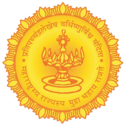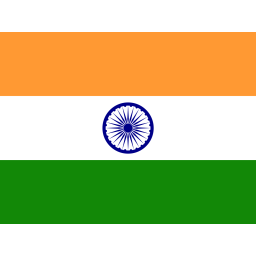Address by Governor at the inauguration of an International Conference organized by the K.J. Somaiya Centre for Buddhist Studies in Mumbai
Address by Shri. CH. Vidyasagar Rao, Governor of Maharashtra at the inauguration of an International Conference organized by the K.J. Somaiya Centre for Buddhist Studies at Somaiya Vidyavihar, Vidyavihar, Mumbai at 1100 hrs on Thursday, 6th December 2018
Shri Samir Somaiya, President, Somaiya Vidyavihar, other Trustees, Prof. Huang Zheng, Asst Rector, Hangzhou Buddhist Academy, Prof V. N. Rajasekharan Pillai, Provost, Somaiya Vidyavihar & Ayurvihar, the most distinguished scholars on Buddhist Studies, delegates, Lt. Gen. Jagbir Singh, Secretary, Somaiya Trust, Dr Supriya Rai, Acting Director, K J Somaiya Centre for Buddhist Studies, heads of various institutions, teachers, invitees, researchers, students, staff, ladies and gentlemen,
At the outset I extend my warm greetings to each one of you to the International Conference on the theme ‘Embodying Compassion: Avalokiteswara in Buddist Art’.
This is a gathering of eminent personalities associated with Buddhist thought and scholarship, and I extend my special welcome to all Scholars coming from different countries of the world and those from India.
I would like to acknowledge the presence of scholars from China, Hong Kong, Japan, Netherlands, Thailand, Germany, Poland, Cambodia and other countries.
Today happens to be the ‘Mahaparinirvan Din’ or death anniversary of Bharat Ratna Dr Babasaheb Ambedkar, the Architect of Indian Constitution. Dr Ambedkar had embraced Buddhism alongwith thousands of his followers 62 years ago. I pay my deepest respects to the memory of the late Dr Babasaheb Ambedkar.
The host of the Conference, Somaiya Vidyavihar, has become a byword for excellence in higher education. I was particularly impressed to note that Somaiya Vidyavihar has under its aegis, institutions dedicated to religious studies, and the most prominently, the K J Somaiya Centre for Buddhist Studies. I congratulate the President Shri Samir Somaiya Ji for providing leadership to the group and its institutions. I also convey my appreciation to Provost Prof. V.N Rajasekharan Pillai for his guidance and support to the Conference.
Ladies and gentlemen,
I am pleased to note that the K.J. Somaiya Centre for Buddhist Studies is completing 25 years of its meaningful existence on this day.
During the last 25 years, the Centre has emerged as one of the finest and most dynamic institutions dedicated to Buddhist Studies. I congratulate the Centre, its Acting Director, faculties, researchers and students on the happy occasion of the Silver Jubilee of the Centre.
It was really thoughtful for the Centre to have organized this International Conference on Buddhist Studies in collaboration with the Hangzhou Buddhist Academy, China.
Since time immemorial, India has been regarded as one of the greatest civilization in the world. The country has been a repository of history and culture, faith and philosophy.
In his book ‘The Case for India’, American Philosopher and Historian Will Durant writes, and I quote,
“India was the motherland of our race, and Sanskrit the mother of Europe’s languages:
She was the mother of our philosophy;
Mother, through the Arabs, of much of our Mathematics;
Mother, through the Buddha, of the ideals embodied in Christianity;
Mother, through the village community, of self-government and democracy.
Mother India is in many ways the mother of us all.” (Unquote)
Will Durant clearly refers to the influence of Buddha on the ideals embodied in Christianity. That was the sweep of the idea and ideals of Lord Buddha in the world.
Bhagwan Buddha’s teachings had a huge impact on the life of the Father of the Nation Mahatma Gandhi.
Ladies and gentlemen,
The culture of India has been among the most receptive and welcoming of diverse faiths and ideas.
Indian culture has always welcomed ideas, howsoever, divergent they may be.
Thousands of years ago, the Rig Veda proclaimed ‘Ekam Sat, Vipra Bahudha Vadanti’ (Which means, Truth is one; sages call it by different names).
It is no coincidence that the land of India became the birthplace of Buddhism, Jainism and Sikkhism and several other faiths.
This holy land of India welcomed the Muslims, Christians, Jews, Zoroastrians and people from other faiths with open arms. Importantly, the country also welcomed non-believers.
Buddhism, the religion of peace, harmony, wisdom and compassion has been among India’s greatest spiritual traditions.
The journey of Buddhism from India to Asia and beyond has been most spectacular. The monks of Buddhism, as also merchants, not only carried knowledge and learning; they also carried arts and crafts, meditation techniques, languages and even martial arts. The Meditation technique of ‘Vipassana’ retuned to India in a renewed form. Today Vipassana has become one of the most popular meditation techniques across the world.
I am very happy that the K J Somaiya Centre for Buddhist Studies is collaborating with Hangzhou Buddhist Academy for the Conference on ‘Embodying Compassion’.
The dissemination of Buddhism to China is one of the most fascinating chapters in human history. Two strong and developed civilizations, India and China, engaged in areas of religion, culture and philosophy. These engagements lasted for more than a thousand years.
Mr Hu Shih, was China’s Ambassador to the United States during 1938-1942. Subsequently, he became the Vice Chancellor of the Peking University. He was very much impressed by the influence of Indian civilization on China. He wrote, and I quote:
“India Conquered and dominated China culturally for 20 centuries without ever having to send a single soldier across her border.” (Unquote)
Chinese masters avidly sought, studied and translated the vast corpus of Buddhist literature. I was amazed to note that the Chinese canon has preserved several texts that are no longer available to us in the original Sanskrit anymore. These texts are a valuable repository of our ancient heritage.
History books in India often refer to the description of India by the Chinese Traveller and monk Heiun Tsang, who visited India during the reign of King Harsha. Thanks to him, we get to know the social, economic and religious conditions in India in the 7th Century AD.
The Chinese traveller had visited Maharashtra. Incidentally Maharashtra has some of the earliest, finest and I would say, maximum number of Buddhist cave temples and arts in India.
Many great locations associated with the life and teachings of Lord Buddha are found in India. These include Kapilvastu, where he spent his childhood; Bodhgaya, where he attained Enlightenment; Sarnath, where he delivered his first sermon; and Kushinagar, where he embraced Mahaparinirvana.
All these places constitute our universal cultural heritage and not just the heritage of India or Maharashtra. It is therefore our collective responsibility to preserve this most precious heritage sites for posterity. As home to Buddha, India has the best Buddhist circuit. We must promote these places which remind us of our glorious religious and spiritual past.
To the great majority of people, Bhagwan Buddha epitomizes the virtue of knowledge, wisdom and compassion. I am very happy that the theme of this Conference is based on a form that embodies the quality of great compassion of the Buddha – Avalokiteswara.
Today we see immense disparity in our society. The rich are getting richer while the poor are getting poorer. As a society and as a nation, all of us need to invoke and imbibe Buddha’s virtue of compassion. This will help us to reduce the suffering of the poor and create a more egalitarian and caring society.
I am happy that Buddha has united all the scholars from across the world in the form of this Conference on the theme of Avalokiteswara. I wish and hope that the Conference will foster understanding and cooperation well beyond art and history, to include many other areas.
I congratulate the K J Somaiya Centre for Buddhist Studies on its Silver Jubilee Foundation Day and wish all of you fruitful deliberations.
Thank you
Jai Hind ! Jai Maharashtra !!



